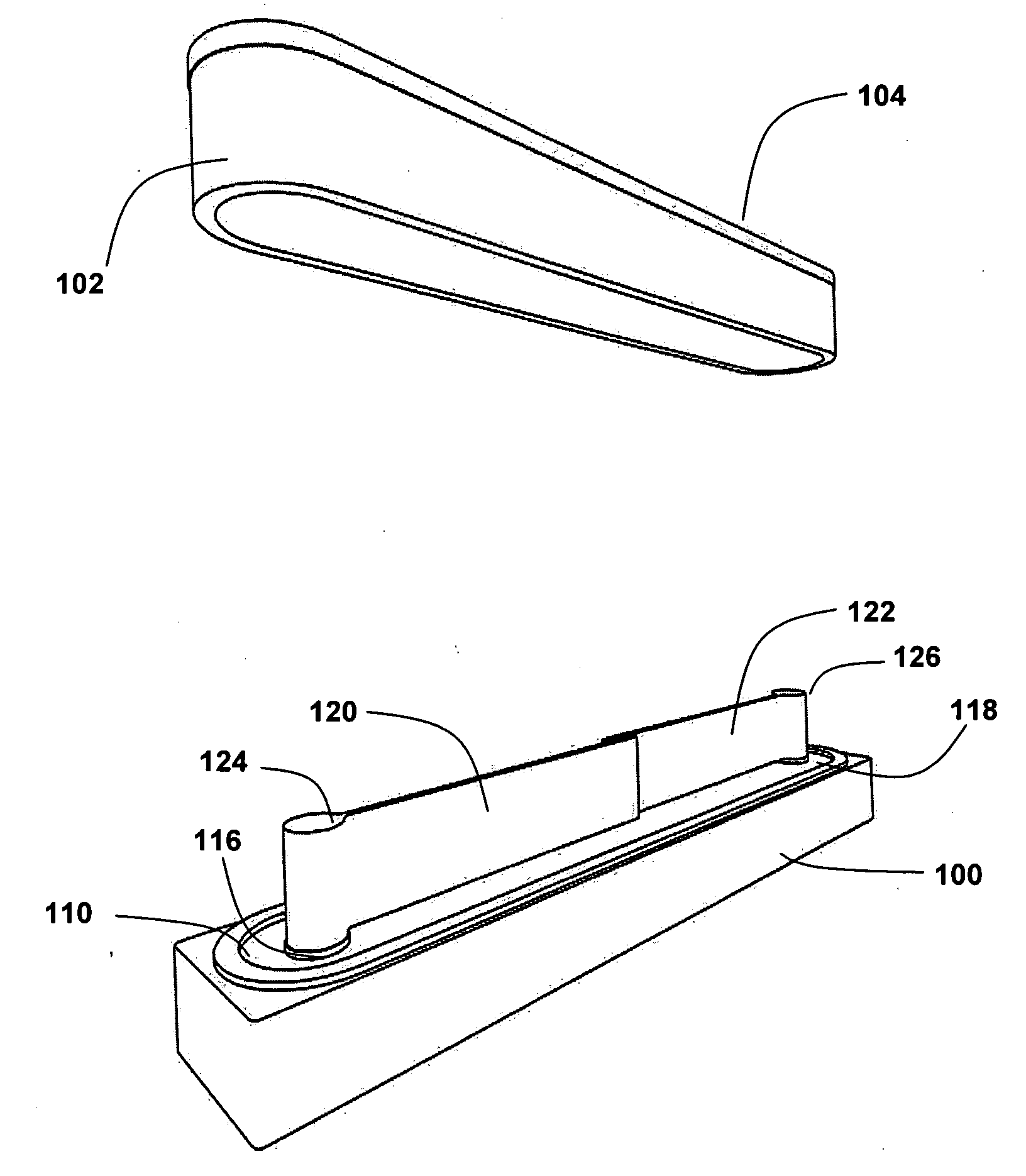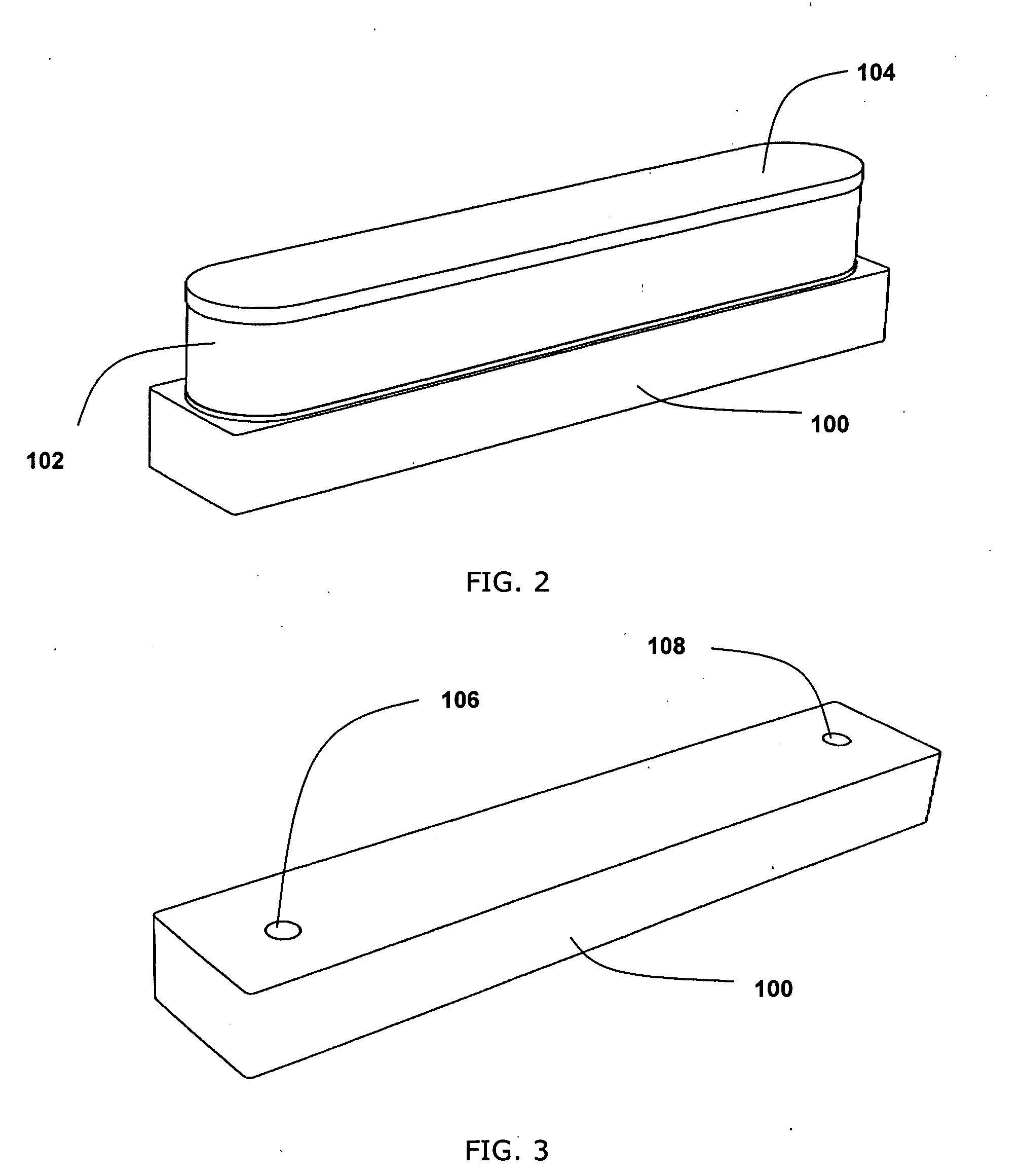Integrated Reed Switch
a reed switch and integrated technology, applied in selector switches, relays, contacts, etc., can solve the problems of low sensitivity, low sensitivity, and low sensitivity of reed switches, so as to reduce size and maintain sensitivity , the effect of reducing the siz
- Summary
- Abstract
- Description
- Claims
- Application Information
AI Technical Summary
Benefits of technology
Problems solved by technology
Method used
Image
Examples
example reed switch embodiments
[0042]Example embodiments of a microfabricated reed switch according to the present invention can comprise an electrically insulating substrate provided with electrical vias or feedthroughs, a reed switch mechanism, a cover to provide hermetic sealing of the reed switch, and electrically conducting pads to provide electrical connection to the reed switch. The figures generally show only a single example switch, comprising only a dice portion of a wafer or die pertaining to a single switch device. In production, many such switches (or other devices) can be fabricated on a single substrate.
[0043]FIG. 1 is an exploded view of an example integrated single pole—single throw (“SPST” or “form A”) integrated reed switch. FIG. 2 is a view of the example switch of FIG. 1 sealed, packaged and singulated. A substrate 100 has electrical vias 106, 108 as shown in the view of the example switch in FIG. 3. The substrate can comprise any of a variety of electrically insulating materials, as examples...
example method
of Making
[0053]A description of fabrication of an integrated reed switch according to the present invention can begin with preparation of a suitable substrate. A variety of insulating substrates such as alumina, glass, glass-ceramic composite and oxidized silicon can be used. Electrical connection to the reed switch can be provided by vias, formed in holes, which can range in size with diameters of 0.002″ to 0.040″ for some applications. Such holes can be machined using laser or water jet drilling. The holes can be provided with electrically conductive material by a number of approaches. The selection of an approach can affect a level of hermeticity acceptable to reed switch longevity for the intended application. As examples, the holes can be provided with electrically conductive material by using thin film physical vapor deposition combined with electroplating or by using pressed, sintered, and fired metal powders or conductive plug paste in a ceramic slurry type of process. Suita...
example embodiment
with Sidewall and Cap
[0059]FIG. 24 and 25 are perspective views of an example embodiment of a reed switch with sidewalls 1001 and a cap 1000. Other example embodiments described herein comprise a cap having two layers: a planar layer and a sidewall layer, such that the sidewall is mounted with the reed switch and positioned within the planar layer above the switch elements. In the example embodiments of FIGS. 24 and 25, a sidewall layer 1001 is formed as part of the switch fabrication process. The cap can then comprise a layer 1002, e.g., of a dielectric or metal material, that mounts with the sidewalls 1001 previously created as part of the switch through the use of a relatively thin spacing pattern 1003. This approach provides a wafer level bonded substrate sandwich for which the cap can be created during singulation or wafer dicing (instead of lithographically).
PUM
| Property | Measurement | Unit |
|---|---|---|
| Thickness | aaaaa | aaaaa |
| Electrical conductivity | aaaaa | aaaaa |
| Magnetic field | aaaaa | aaaaa |
Abstract
Description
Claims
Application Information
 Login to View More
Login to View More - R&D
- Intellectual Property
- Life Sciences
- Materials
- Tech Scout
- Unparalleled Data Quality
- Higher Quality Content
- 60% Fewer Hallucinations
Browse by: Latest US Patents, China's latest patents, Technical Efficacy Thesaurus, Application Domain, Technology Topic, Popular Technical Reports.
© 2025 PatSnap. All rights reserved.Legal|Privacy policy|Modern Slavery Act Transparency Statement|Sitemap|About US| Contact US: help@patsnap.com



